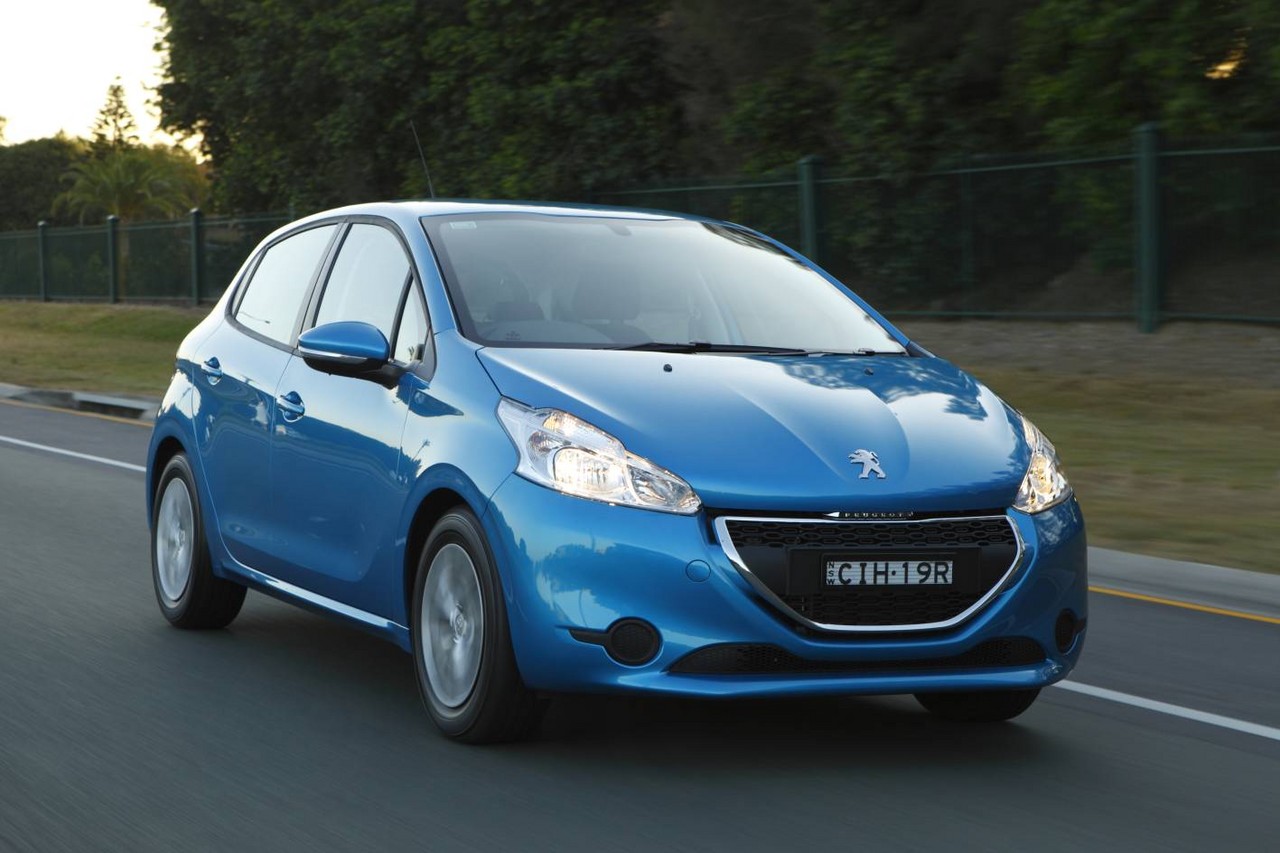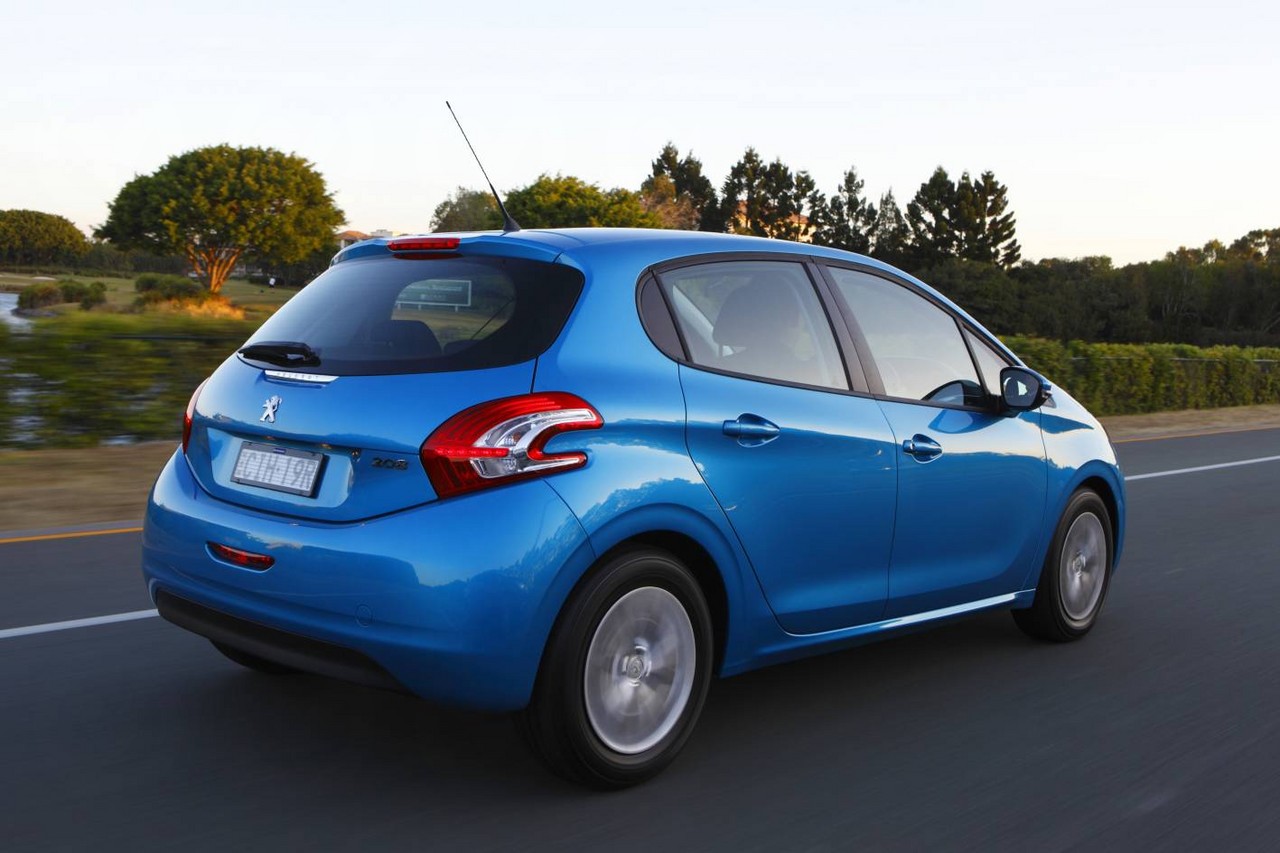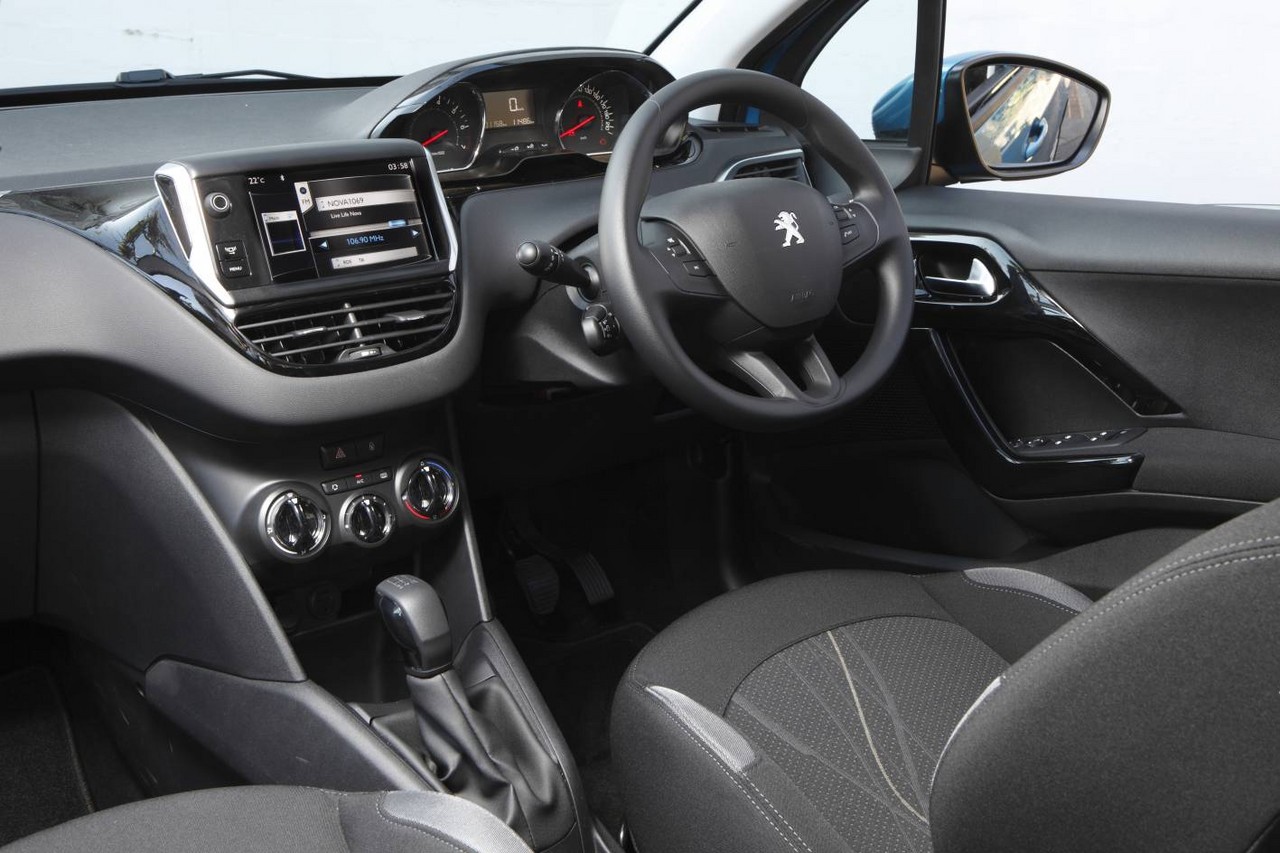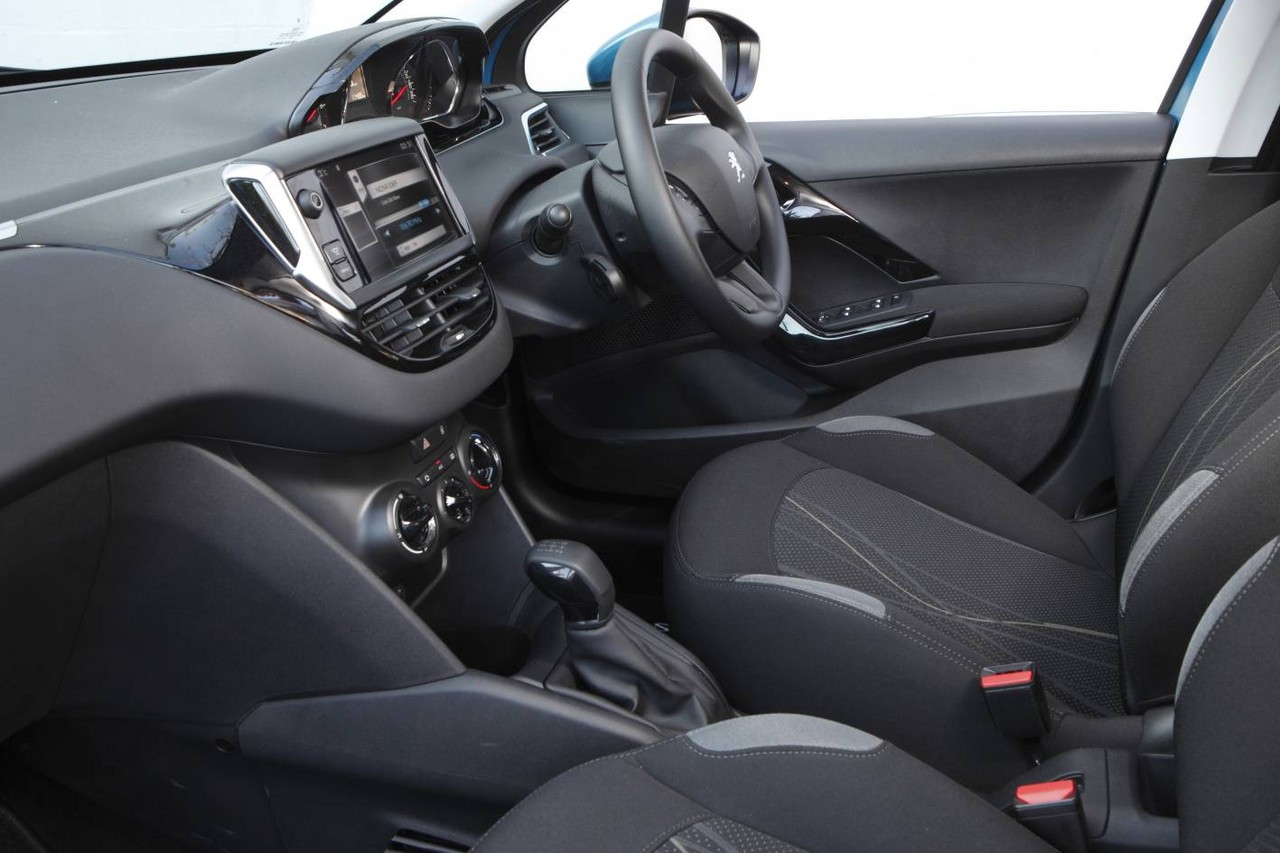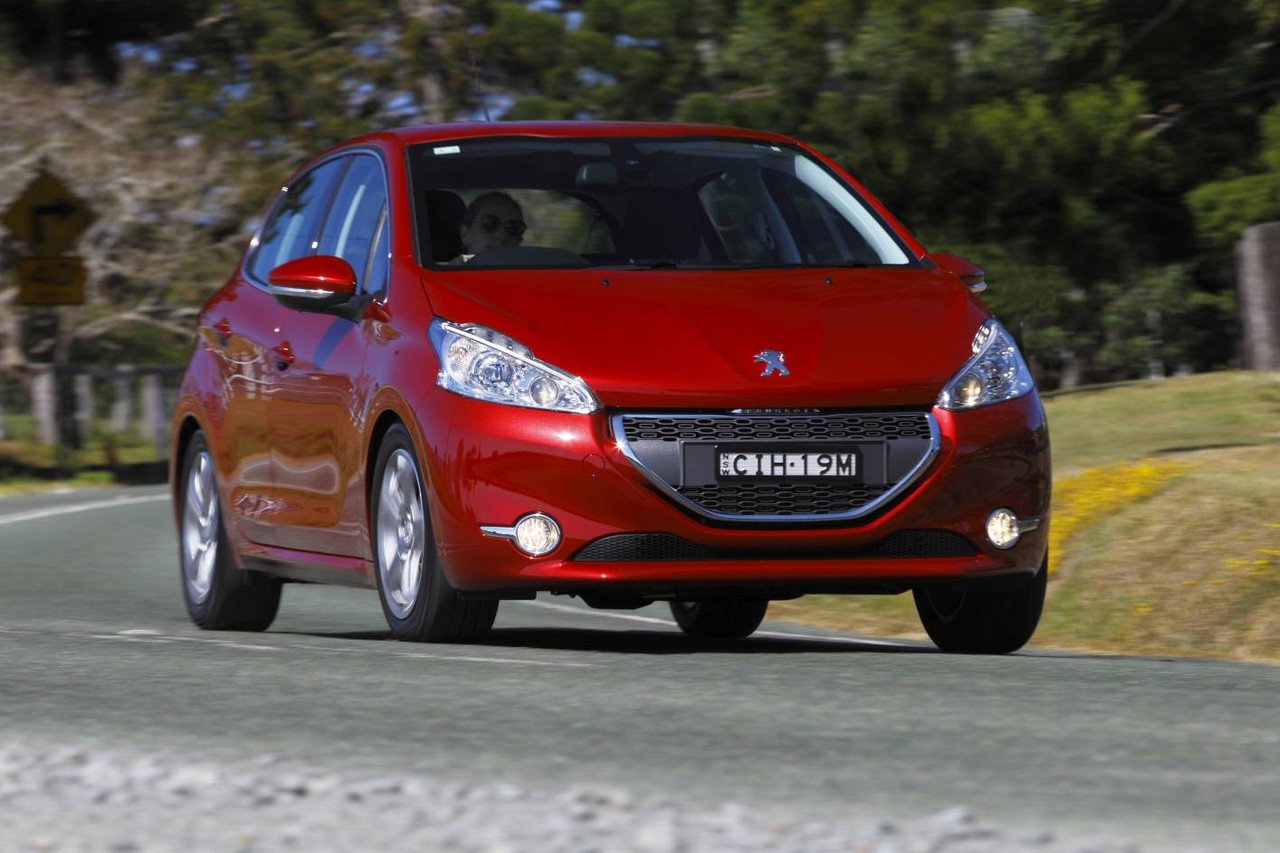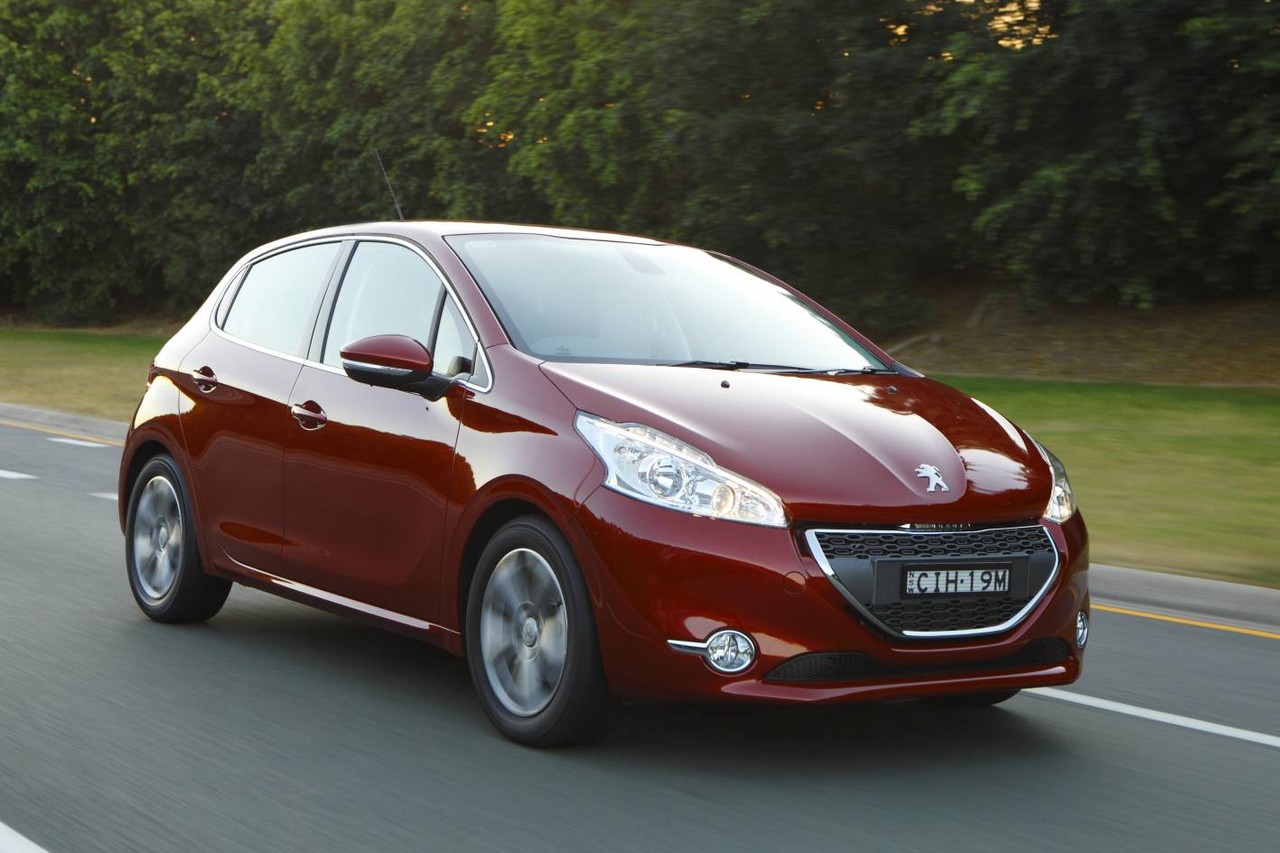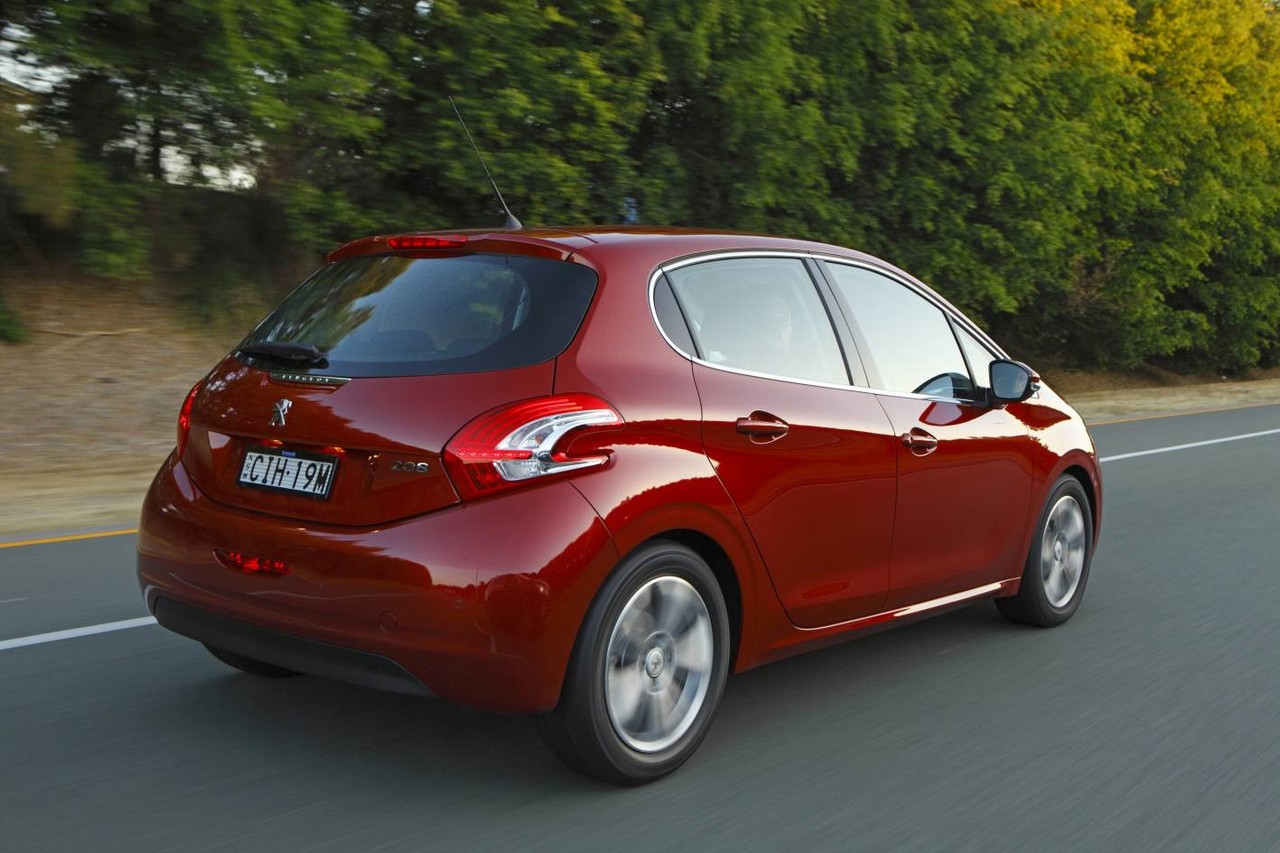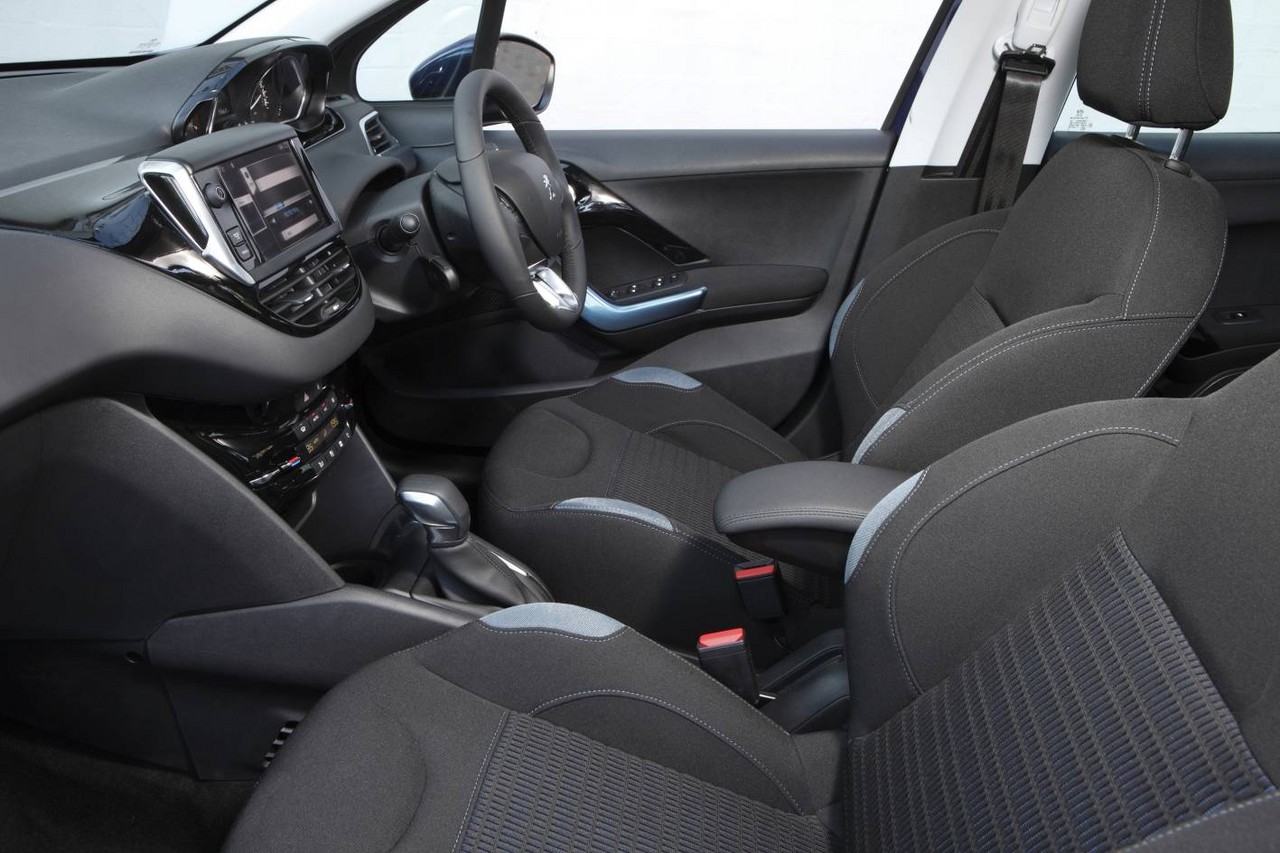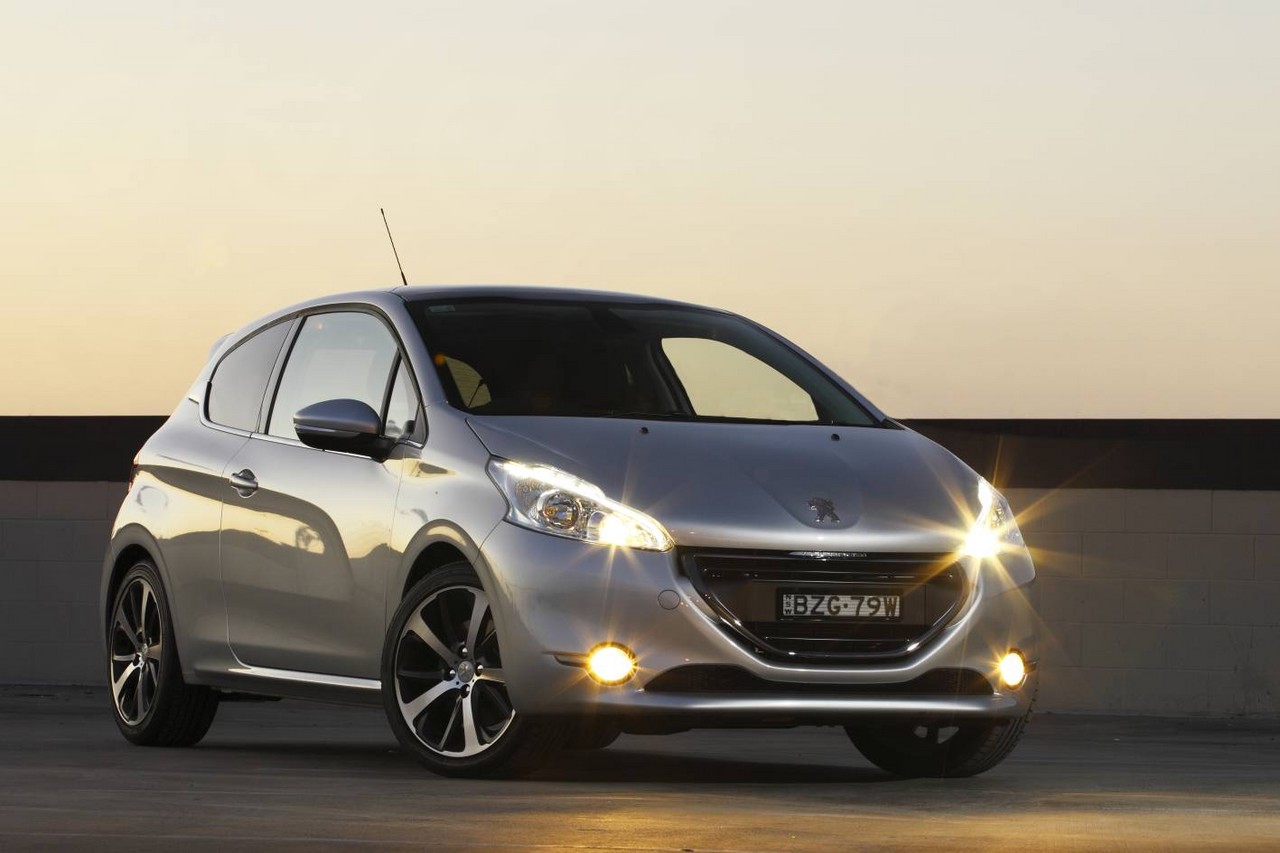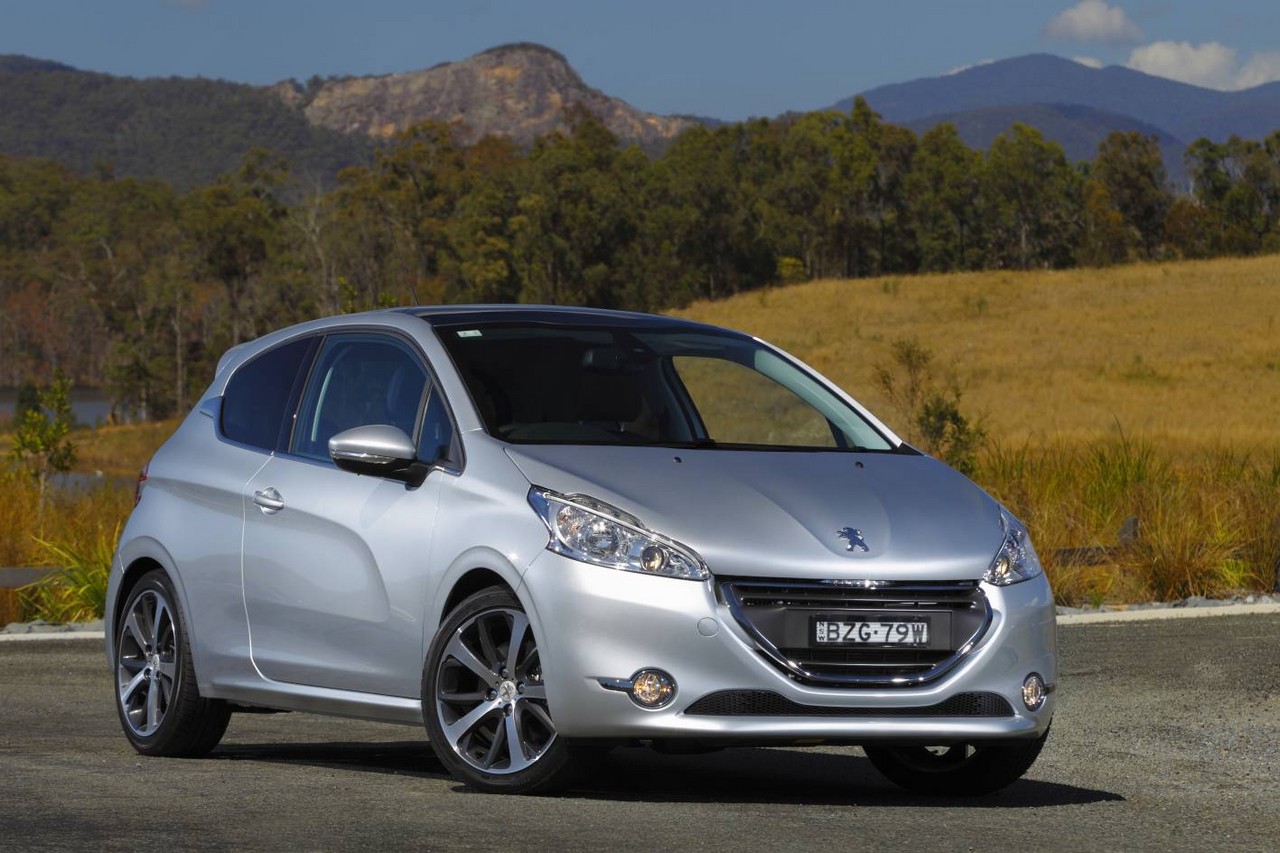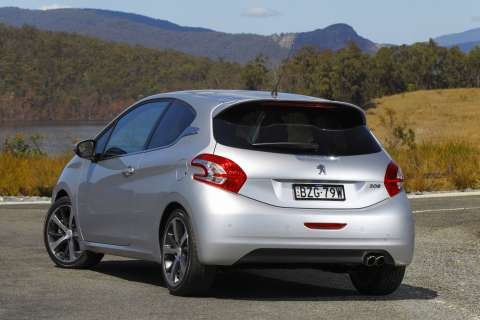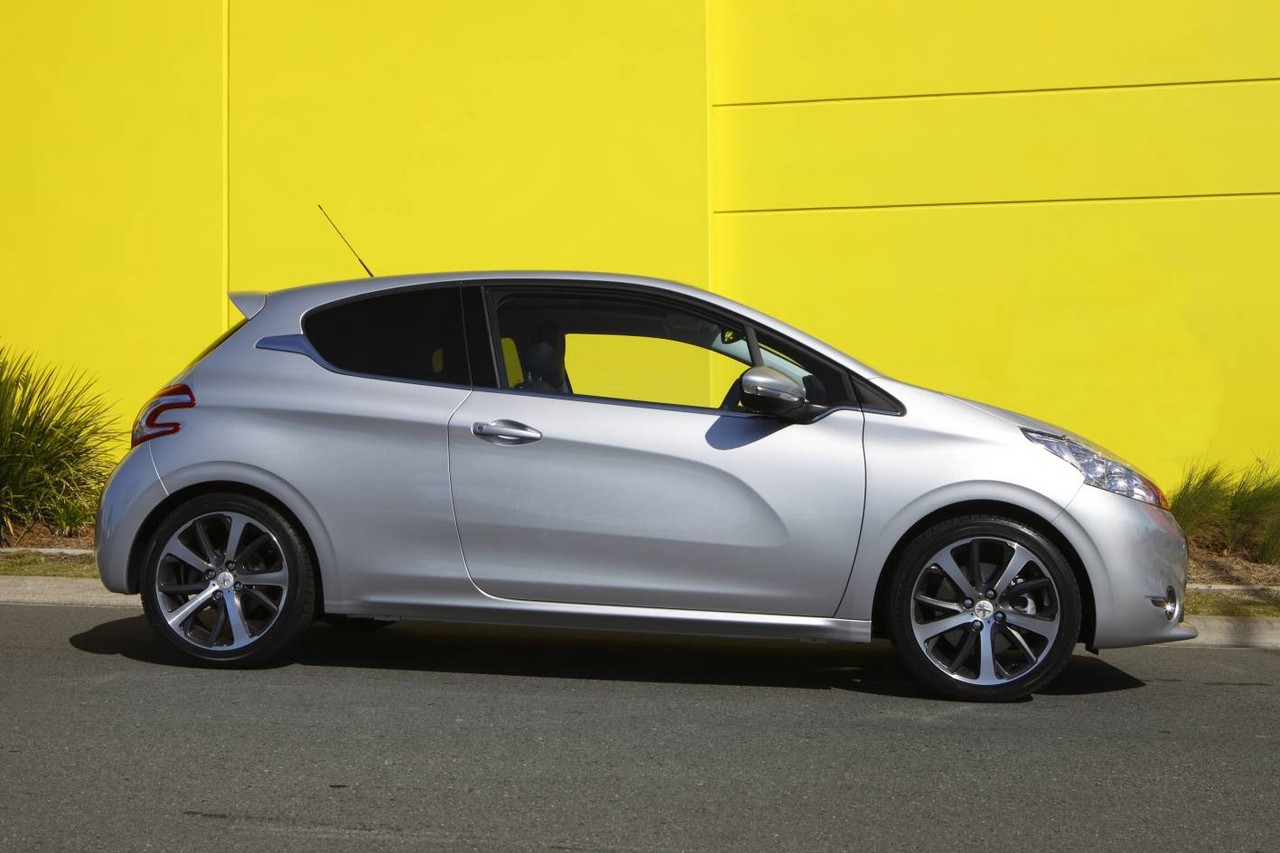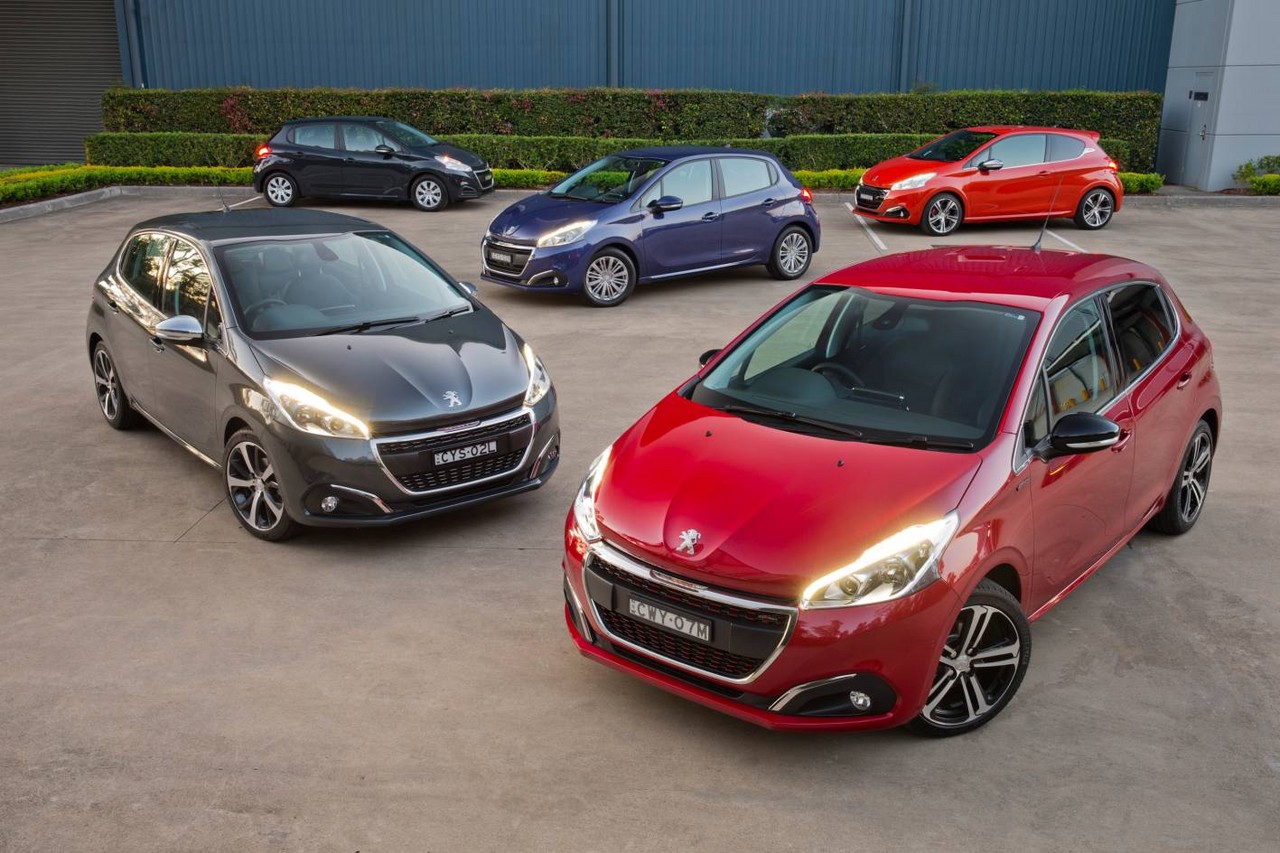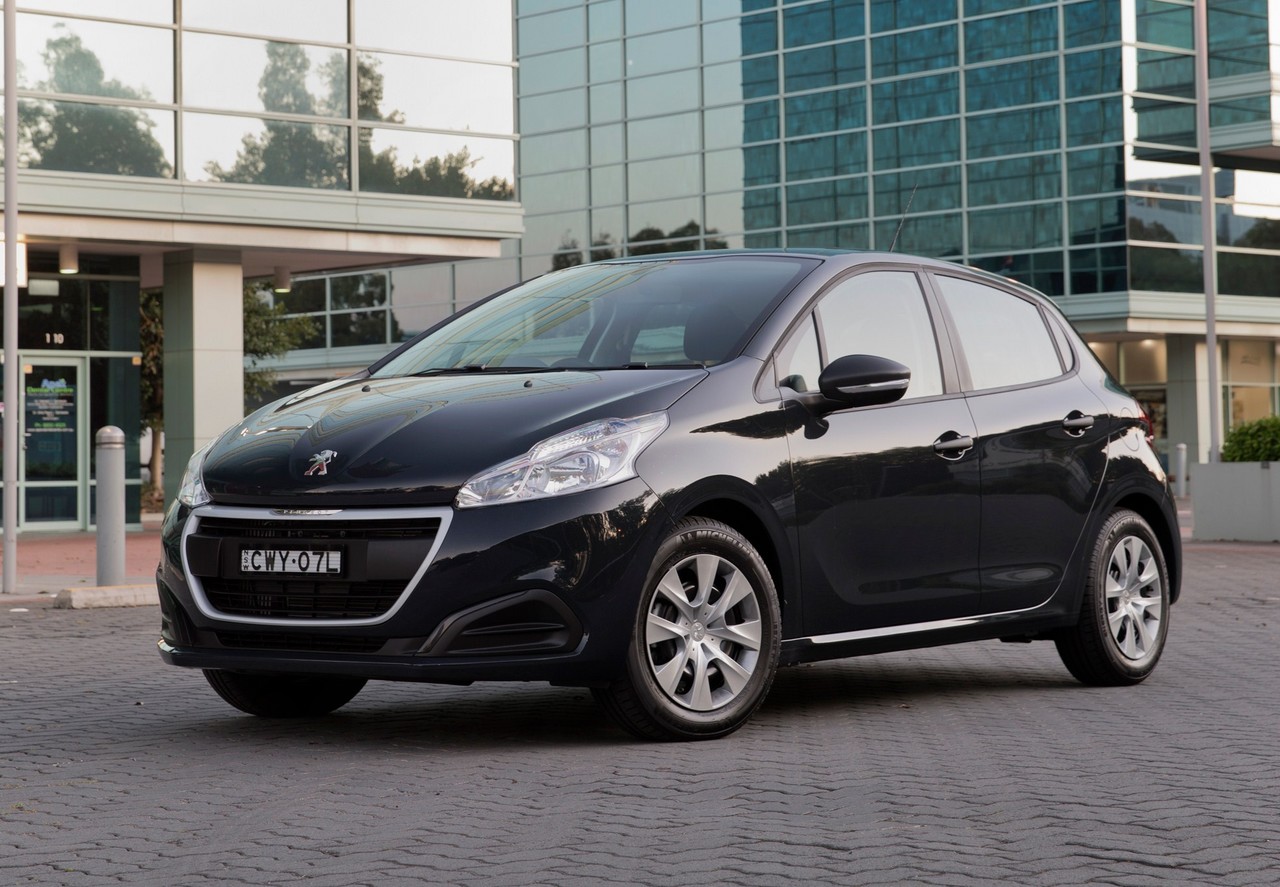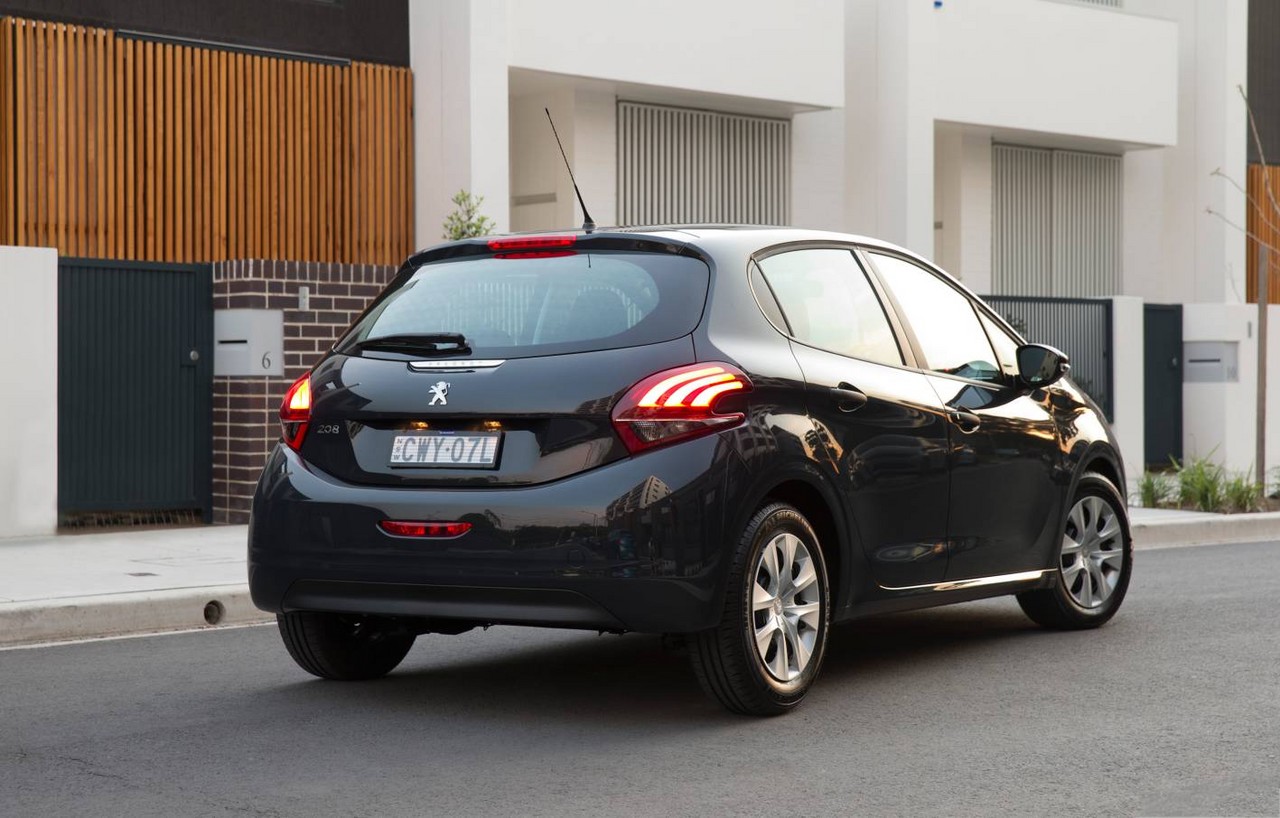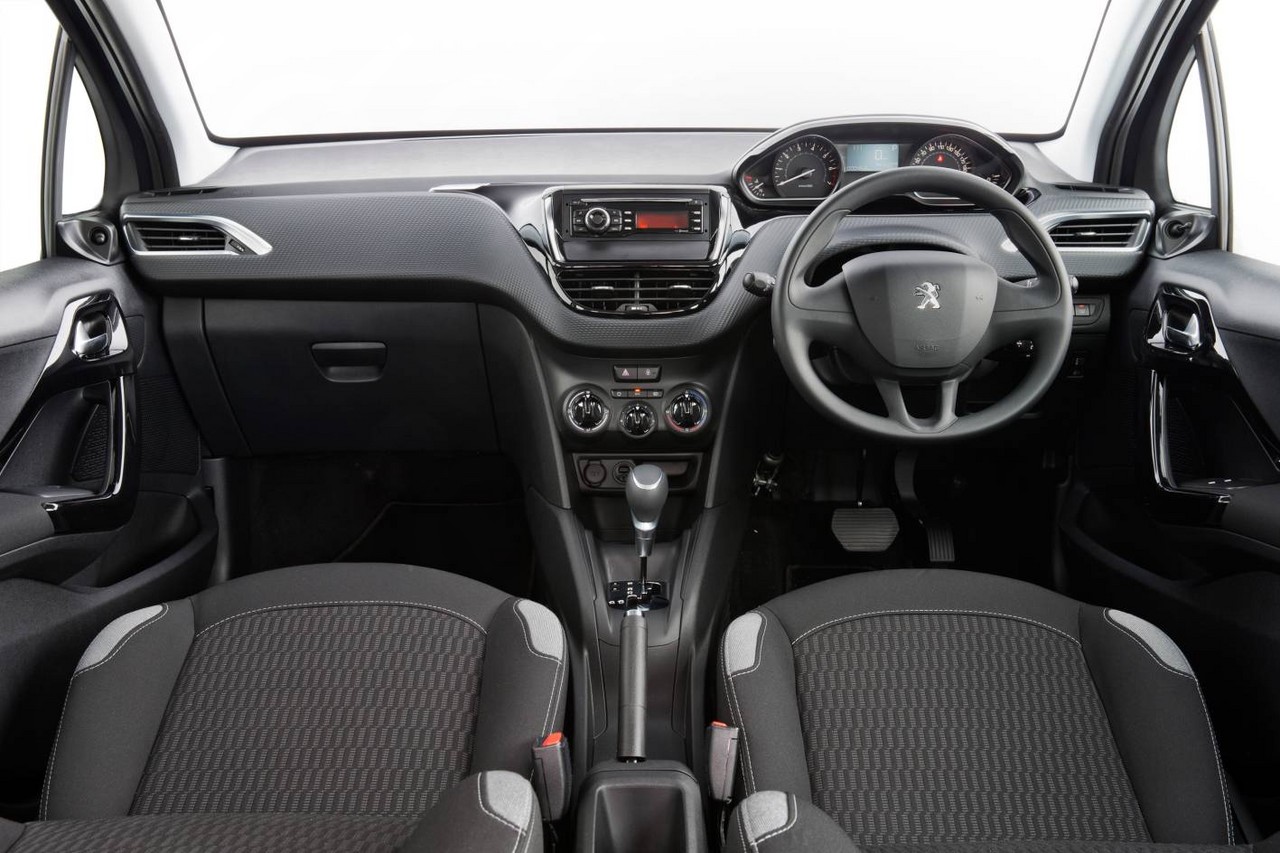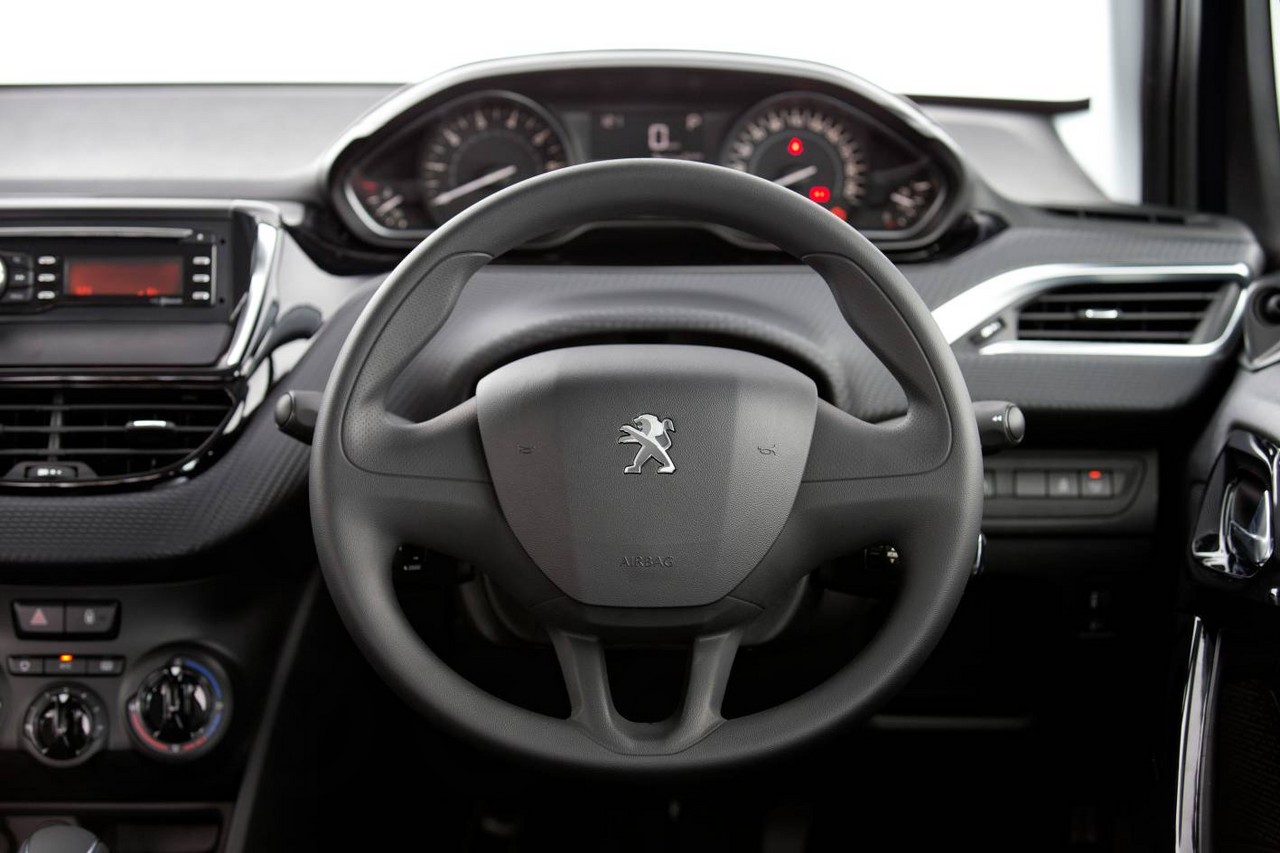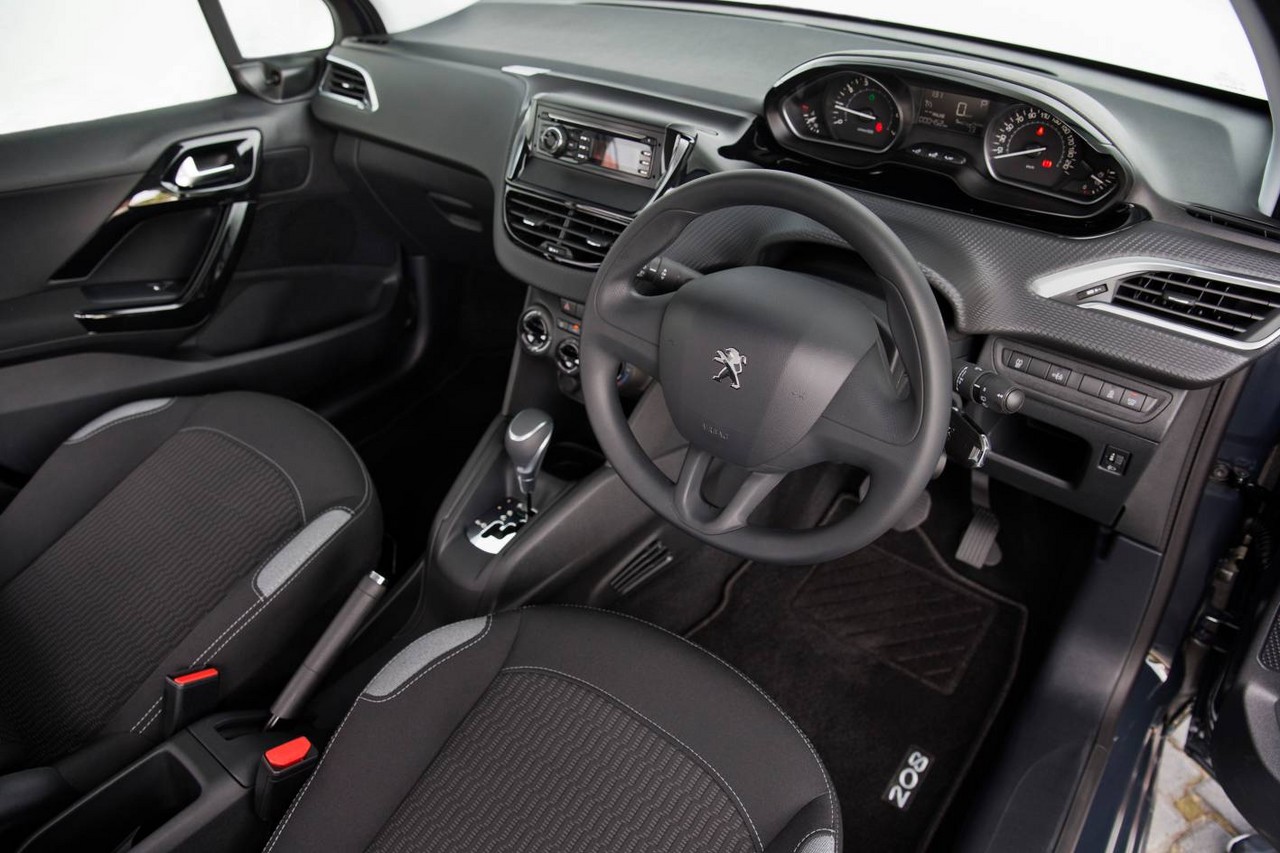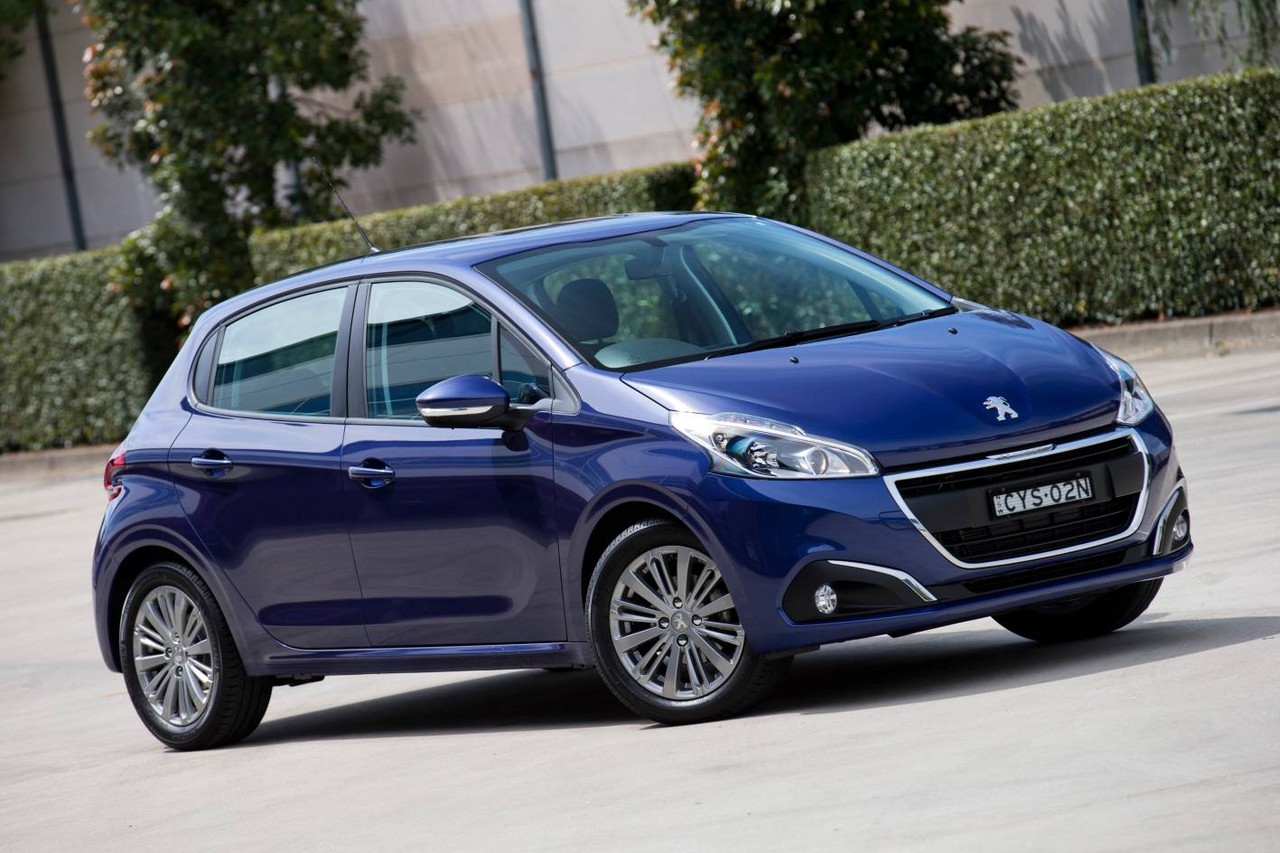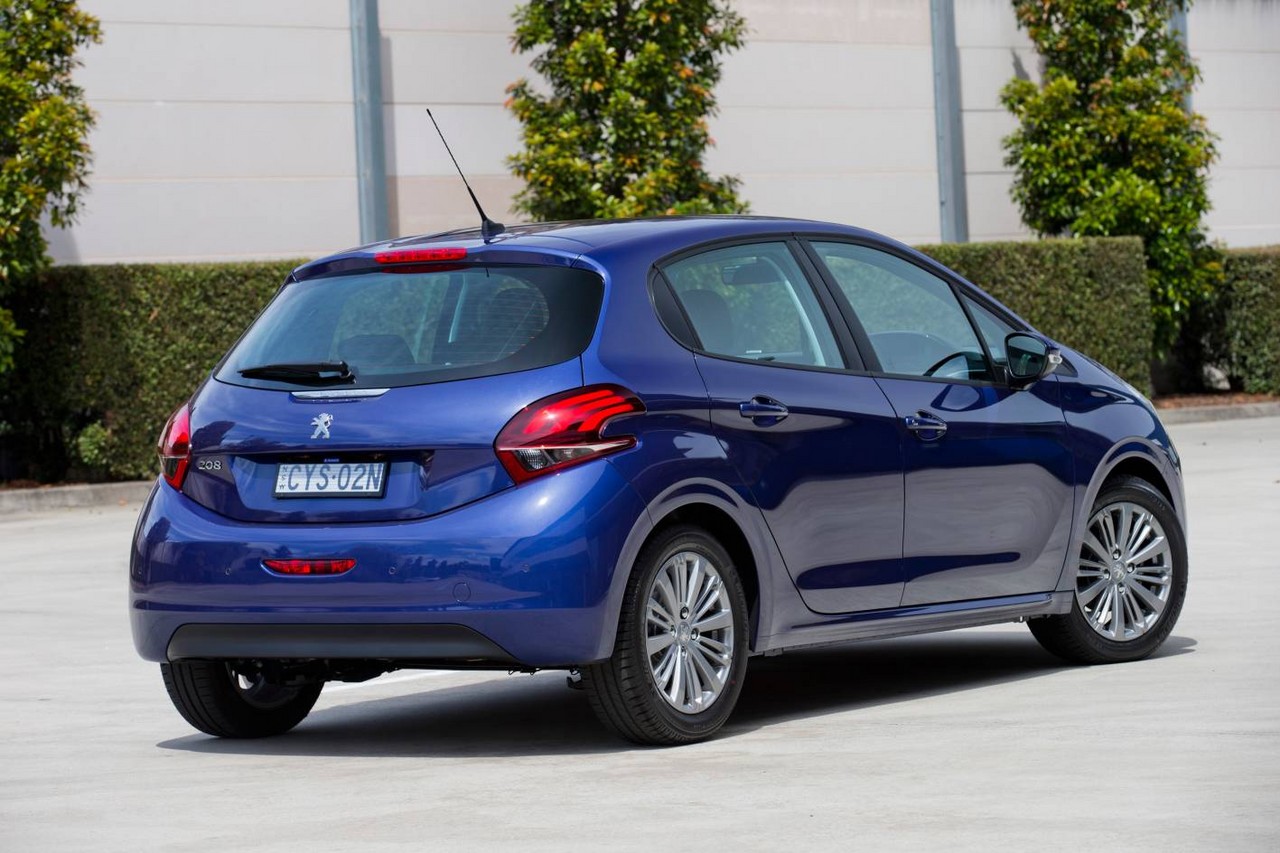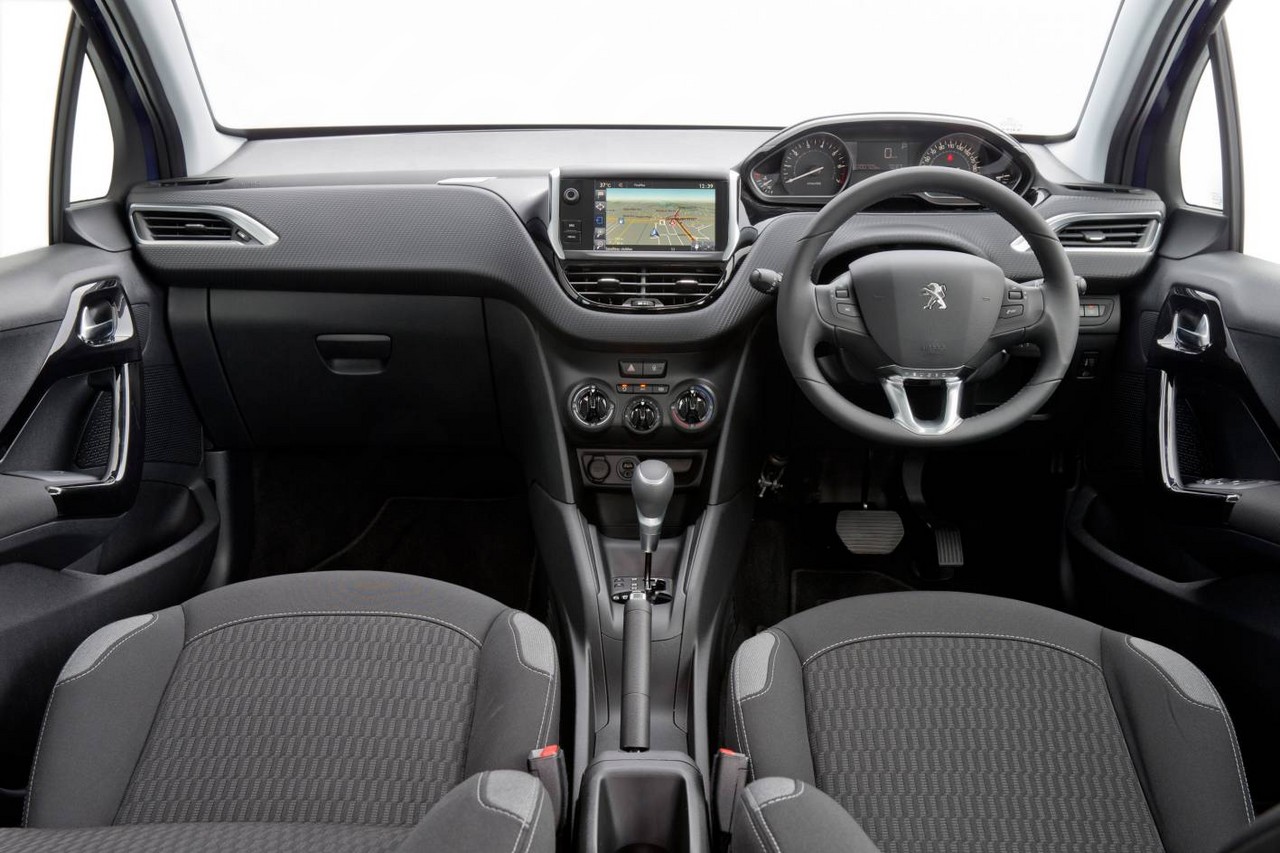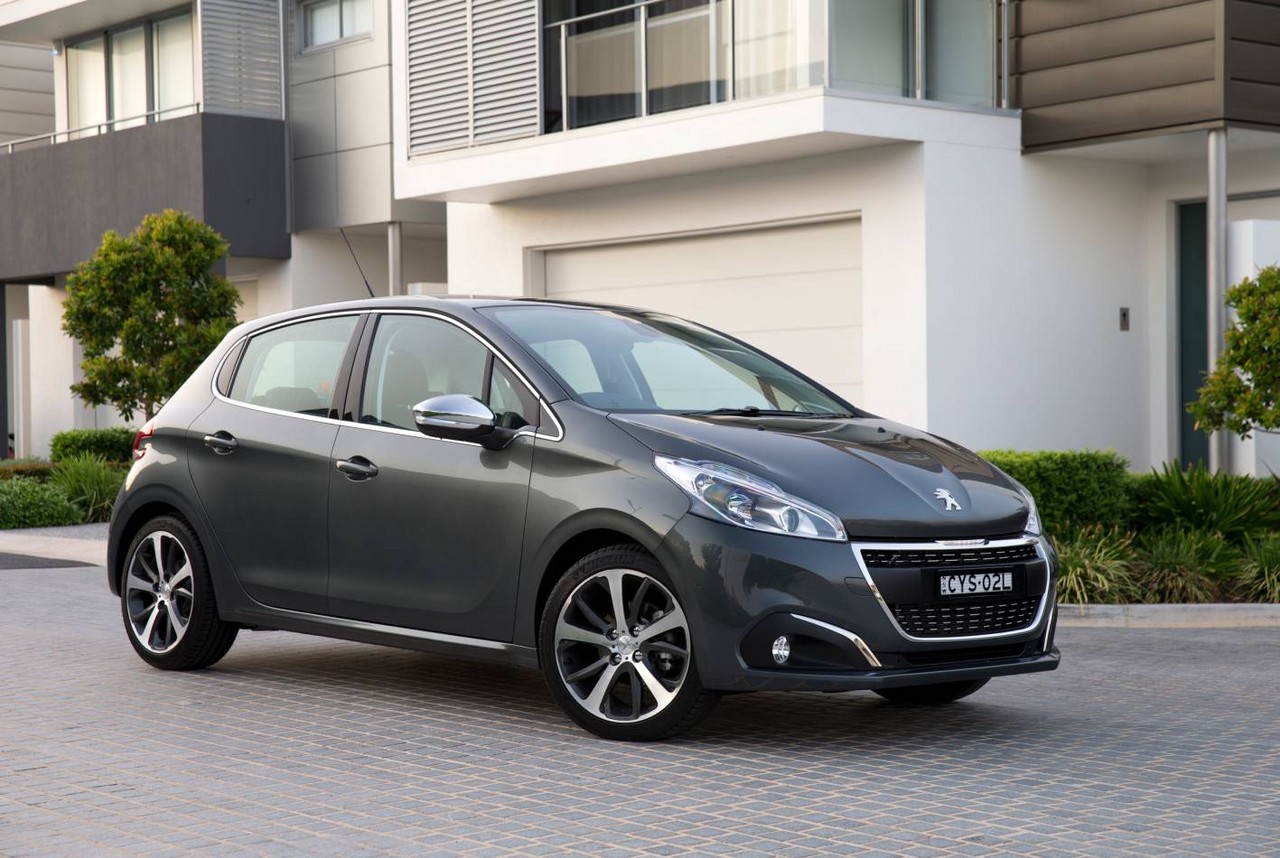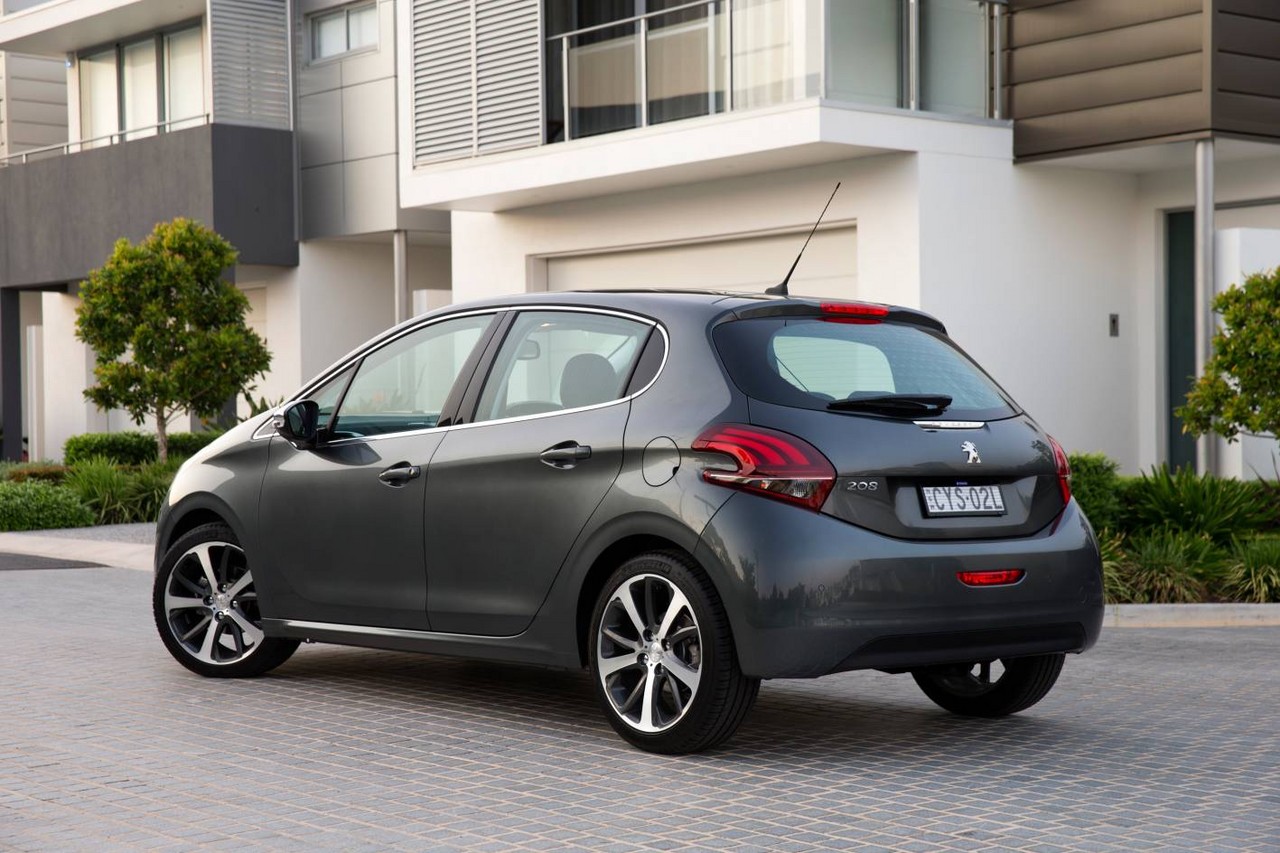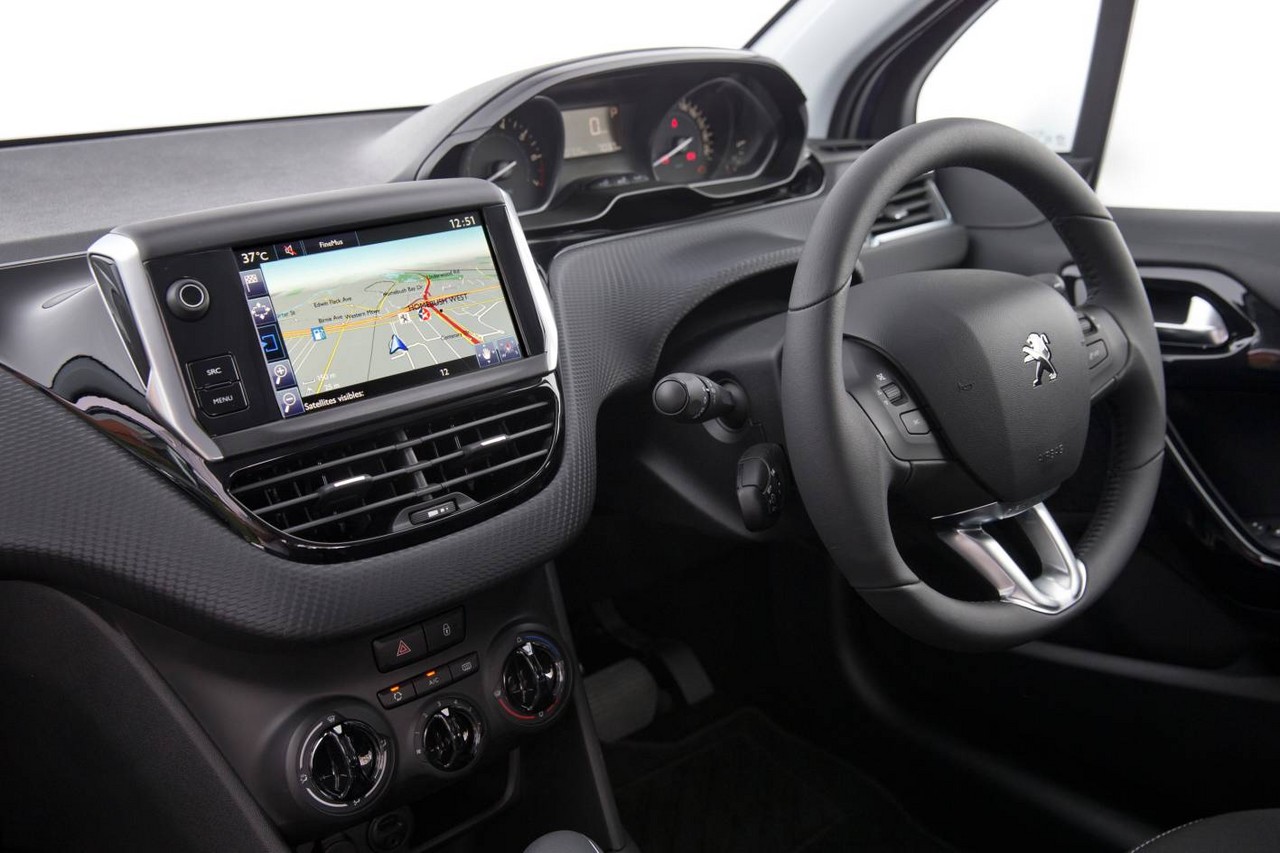
- Responsive 1.6-litre turbo petrol engine
- Comfortable front seats
- Accomplished ride/handling balance
- Well-weighted, direct steering
- Out-dated four-speed automatic transmissions
- For 1.6-litre petrol engine, manual transmission has notchy, long-throw action
- Cramped rear seats
- Wind noise at highway speeds
- Handling of 208 GTi shaded by Ford Mk.6 Fiesta ST
Review: Peugeot A9.I 208 (2012-15)
Overview
Released in October 2012, the Peugeot A9 Phase I (A9.) 208 range consisted of light, three- and five-door hatchbacks. Manufactured in Trnava, Slovakia, the front-wheel drive Peugeot A9 208 range initially consisted of five variants, all powered by petrol engines. Of these, the entry-level Active variants were available in five door bodies and with 1.2- and 1.6-litre petrol engines. The three-door hatchback range, however, consisted of Allure, Allure Premium and Allure Sport variants that were all powered by 1.6-litre engines, though the latter had a turbocharger for greater performance.
In August 2013, the Peugeot 208 GTi was released.
| Body | Variant | Engine | Trans. | Peak power | Peak torque |
|---|---|---|---|---|---|
| 5dr hatch |
Active | 1.2-litre petrol I3 | 5sp man. | 60 kW at 5750 rpm | 118 Nm at 2750 rpm |
| 1.6-litre petrol I4 | 4sp auto | 88 kW at 6000 rpm | 160 Nm at 4250 rpm | ||
| Allure | 1.6-litre petrol I4 | 5sp man., 4sp auto |
88 kW at 6000 rpm | 160 Nm at 4250 rpm | |
| Allure Premium | 1.6-litre petrol I4 | 4sp auto | 88 kW at 6000 rpm | 160 Nm at 4250 rpm | |
| 3dr hatch |
Allure Sport | 1.6-litre turbo petrol I4 | 6sp man. | 115 kW at 6000 rpm | 240 Nm at 1400 rpm |
| GTi | 1.6-litre turbo petrol I4 | 6sp man. | 147 kW at 5500 rpm | 275 Nm at 1700 rpm | |
| GTi 30th Anniversary | 1.6-litre turbo petrol I4 | 6sp man. | 153 kW at 6000 rpm | 300 Nm at 3000 rpm |
Dimensions
Compared to the Peugeot 207 , the Peugeot 208 was 68 mm shorter (at 3962 mm), 20 mm narrower (1739 mm), 12 mm lower (1460 mm) and had the same length wheelbase (2538 mm). Inside, however, more compact front seat backs contributed to greater interior space. The 208 also achieved significant mass reductions of between 110 kg and 173 kg depending on variant, with the lightest 208 weighing just 975 kg.
Suspension
The Peugeout 208 had MacPherson strut front suspension and torsion beam rear suspension (both with helical springs and hydraulic dampers).
Safety equipment
Standard safety equipment for the Peugeout 208 included dual front airbags, front side airbags, full-length curtain airbags, ABS, electronic brake force distribution, brake assist, electronic stability control, traction control and front seatbelts with pretensioners and load limiters.
Brakes
Peugeot 208 Active variants with 1.2-litre petrol engines were fitted with 266 mm by 22 mm ventilated front brake discs and 203 mm rear drum brakes. All models with naturally aspirated 1.6-litre petrol engines were fitted with 249 mm by 9 mm rear discs brakes, while the Allure Sport and 208 GTi had 302 mm by 26 mm front brake discs.
Euro NCAP testing
In Euro NCAP testing , a left-hand drive Peugeout 208 – powered by a 1.4-litre turbo-diesel engine – received a five star safety rating which included an 88 per cent adult occupant protection rating and a 78 per cent child occupant protection rating. In the frontal offset crash test, occupant protection was rated as good for most areas, but only adequate for the driver’s chest and lower and legs; chest protection for the front passenger was also rated as adequate. In the side impact test, chest protection was rated as adequate; in the more severe pole test, chest protection was rated marginal. Peugeot also demonstrated that a similar level of protection would be provided for occupants of different sizes and to those seated in different positions.
Features: 208 Active, Allure and Allure Premium
Standard features for the Peugeot 208 Active included 15-inch steel wheels with 185/65 R15T tyres, a six speaker sound system with a seven-inch touch screen, MP3-compatibility, auxiliary inputs (3.5 mm/USB/iPod) and Bluetooth audio streaming, air conditioning, ‘Modcore’ cloth trim, cruise control (with speed limiter), a rear fog light, 60/40 split and folding rear seats, Bluetooth mobile phone connectivity, remote central locking, power windows and heated mirrors, a height and reach adjustable steering wheel, height adjustable driver’s seat, tinted windows, a 12 volt power outlet, trip computer and an immobiliser.
The 208 Allure was further equipped with 16-inch alloy wheels with 195/55 R16H tyres, dual-zone climate control air conditioning, contoured front sports seats, ‘Maille’ cloth trim, daytime LED running lights, front fog lights, automatic headlights, rain-sensing wipers, rear parking sensors, a leather-wrapped steering wheel, illuminated vanity mirrors and a coloured multi-function display.
Beyond this, the 208 Allure Premium added 17-inch alloy wheels with 205/45 R17V tyres, ‘Mariot’ leather/cloth trim, directional fog lights, a leather-wrapped hand brake, panoramic glass roof with sunblind, rear privacy glass and a cargo net. Visual cues for the Allure Premium and Allure Sport variants included dark chrome grille surrounds, gloss black door trim and chrome-tipped exhaust pipes.
Compared to the Allure Premium, the 208 Allure Sport was distinguished by its ‘Temke’ cloth trim, blue instrument backlighting, aluminium gear knob and drilled sports pedals.
Peugeot 208 GTi
Compared to the Allure Premium variant, the 208 GTi featured satellite navigation system, contoured sports seats with full grain ‘Club Nappa’ leather upholstery and ‘Caro Weave’ cloth, power folding door mirrors and an electrochromatic rear view mirror.
Peugeot 208 GTi 30th Anniversary
Production of the 208 GTi 30th Anniversary commenced in October 2014 and Australian deliveries followed in early 2015. Compared to the standard GTi, the 208 GTi 30th Anniversary had a 10 mm lower ride height, a wider track (22 mm wider at the front and 16 mm at the rear), 18-inch alloy wheels, Michelin Pilot Super Sport 205/40 ZR18 tyres and a Torsen limited slip differential. The front brakes were also upgraded with 323 mm by 28 mm ventilated front discs and Brembo fixed four-piston calipers.
The GTi 30th Anniversary had a more powerful engine and unique gear ratios for its six-speed manual transmission that enabled it to accelerate from rest to 100 km/h in 6.5 seconds (compared to 6.8 seconds for the standard 208 GTi). The stability and traction control systems were also recalibrated to ‘be less intrusive when driving’.
Visually, the 208 GTi 30th Anniversary could be identified by its matt black treatment for the alloy wheels, grille surround, fog lamp bezels door mirror shells, window weather strips, side skirts and wheel arch extensions; the quarter panel also had a ‘208 GTi 30th’ logo. The 208 GTi 30th Anniversary was available in Alpine White, Le Mans Red metallic or two-tone red and black paint finishes (the latter an extra-cost option).
Inside, the 208 GTi 30th Anniversary featured Alcantara and black TEP seat trim with red stitching and a black dotted mesh pattern.
Brochure
Specifications
- Specifications: Peugeot A9 208 (December 2013)
- Specifications: Peugeot A9 208 GTi (August 2013)
- Specifications: Peugeot A9 208 (July 2014)
- Specifications: Peugeot A9 208 GTi (July 2014)
Related links
Review: Peugeot A9.II 208 (2015-18)
Overview
Released in Australia in October 2015, the Peugeot A9 Phase II (A9.II) 208 introduced a revised range which consisted of Access, Active, Allure, GT-line and GTi variants. Furthermore, the naturally aspirated 1.6-litre petrol engine was replaced by 1.2-litre turbocharged ‘PureTech e-THP’ engine which was mated to a six-speed Aisin transmission. The A9.II 208 GTi was also fitted with the more powerful 1.6-litre turbocharged engine that was previously introduced in the 208 GTi 30thAnniversary edition. All powertrains for the A9.II 208 range were compliant with Euro 6 emissions standards.
The Peugeot A9.II 208 could be identified by its redesigned front bumper, wider and deeper grille with integrated chrome rim and redesigned LED tail-lights which featured Peugeot’s ‘claws’ motif. The A9.II 208 introduced new paint finishes such as Orange Power, Hurricane Grey (which replaced Blossom Grey) and Virtual Blue (which replaced Calado Blue). The A9.II 208 was available with texture matte premium paint as previously used on the Peugeot 208 GTi 30th Anniversary model. The textured matte paint had a matte and satin finish which, according to Peugeot, reacted strongly to accentuate variations in finish and shade.
| Body | Variant | Engine | Trans. | Peak power | Peak torque |
|---|---|---|---|---|---|
| 5dr hatch |
Access | 1.2-litre petrol I3 | 5sp man. | 60 kW at 5750 rpm | 118 Nm at 2750 rpm |
| Access, Active, Allure, GT-line |
1.2-litre turbo petrol I3 | 6sp man. | 81 kW at 5500 rpm | 205 Nm at 1500 rpm | |
| 3dr hatch |
GTi | 1.6-litre turbo petrol I4 | 6sp man. | 153 kW at 6000 rpm | 300 Nm at 3000 rpm |
Safety equipment
For the Peugeot 208 Allure and GT-Line, Peugeot’s ‘Active City Brake’ was available as an extra-cost option. Operating at speeds under 32 km/h, Active City Brake could provide autonomous braking where a frontal collision was anticipated to prevent or reduce its severity. Where specified, Active City Brake was accompanied by a rear view camera.
From October 2017, the Peugeot 208 – but not 208 GTi – was equipped with ‘Active City Brake’ as standard.
Features: 208 Active, Access, Allure and GT-line
Compared to the Peugeot A9.I 208 Active, the A9.II 208 Access featured ‘Cran’ tungsten cloth trim and tyre pressure monitoring, but omitted the seven-inch touch screen, power adjustable mirrors with heating function and power windows
Relative to the Access, the Peugeot 208 Active was further equipped with 16-inch alloy wheels with 195/55 R16H tyres, Arkamys Digital Sound Processing, a seven-inch touch screen, front fog lights, LED daytime running lights, rear parking sensors, leather-trimmed steering wheel, power adjustable mirrors with heating and folding function, power windows and ‘follow me home’ delayed headlight illumination. Visually, the 208 Active could be identified by its two-tone headlights with black and chrome masks, body-coloured door mirrors and body-coloured door handles.
The A9.II 208 Allure was further equipped with a satellite navigation system, dual-zone climate control air conditioning, an air conditioned glove box, ‘Techmat’ mistral 3D mesh cloth trim, LED running lights, cornering front fog lights, front parking sensors, automatic headlights, rain-sensing wipers, a front centre armrest, an electrochrome rear view mirror, a height adjustable front passenger seat and Peugeot’s ‘City Park’ automated parking function.
The 208 Allure could be identified by its ‘Equaliser’ front grille design with chrome highlights and surround, and chrome door mirrors. Inside, the 208 Allure featured aluminium trim highlights for the centre console and a chrome-accented gear shifter; ‘Claudia’ leather trim was available as an extra-cost option.
Relative to the 208 Allure, the 208 GT-line featured 17-inch alloy wheels with 205/45 R17V tyres, front sports seats with red stitching, a leather-trimmed handbrake, front map reading lights and rear privacy glass. Visual cues for the 208 GT-line included its ‘Equaliser’ front grille with red highlights, Perla Nera Black gloss door mirrors, ‘GT-line’ exterior badging and chrome exhaust tip.
Features: 208 GTi
The Peugeot 208 GTi was similarly equipped to the GT-line but distinguished by its full grain black leather and ‘caro’ cloth trim, ‘Peugeot’ lettering on the aluminium door sills and red LED instrument dial surround. The 208 GTi could be identified by its unique grille with chequered flag design and red inserts, chrome door mirrors, dual chrome exhaust tip, rear spoiler and exterior ‘GTi’ badging.
2018 Peugeot 208 GTi Edition Definitive
The Peugeot 208 GTi Edition Definitive was officially released in Australia in August 2018 to mark the end of A9 208 GTi production. Visually, the Peugeot 208 GTi Edition Definitive could be identified by its Pearl White paint, contrasting Matte Black finishes and ‘Peugeot Sport’ badging on the C-pillar. Inside, the 208 GTi Edition Definitive featured ‘Peugeot Sport’ bucket seats and red ‘Peugeot Sport’ embroidered floor mats.
Developed by Peugeot Sport, the 208 GTi Edition Definitive had a unique suspension tune, wider front and rear tracks, and a lower ride height. The 208 GTi Edition Definitive was also fitted with a mechanical Torsen limited-slip differential as standard. The 208 GTi Edition Definitive was also equipped with Peugeot’s ‘Active City Brake’ (i.e. autonomous emergency braking, or AEB).
Australian deliveries of the Peugeot 208 GTi Edition Definitive were limited to 20 vehicles; its drive-away recommended retail price was $33,990.
Specifications
- Specifications: Peugeot A9.II 208 (October 2015)
- Specifications: Peugeot A9.II 208 GTi (October 2015)
- Specifications: Peugeot A9.II 208 (April 2018)
- Specifications: Peugeot A9.II 208 GTi (April 2018)
Related links
- Peugeot Automobiles Australia: Peugeot 208
- Peugeot Automobiles Australia: Peugeot 208 GTi
- Wikipedia.org: Peugeot 208
